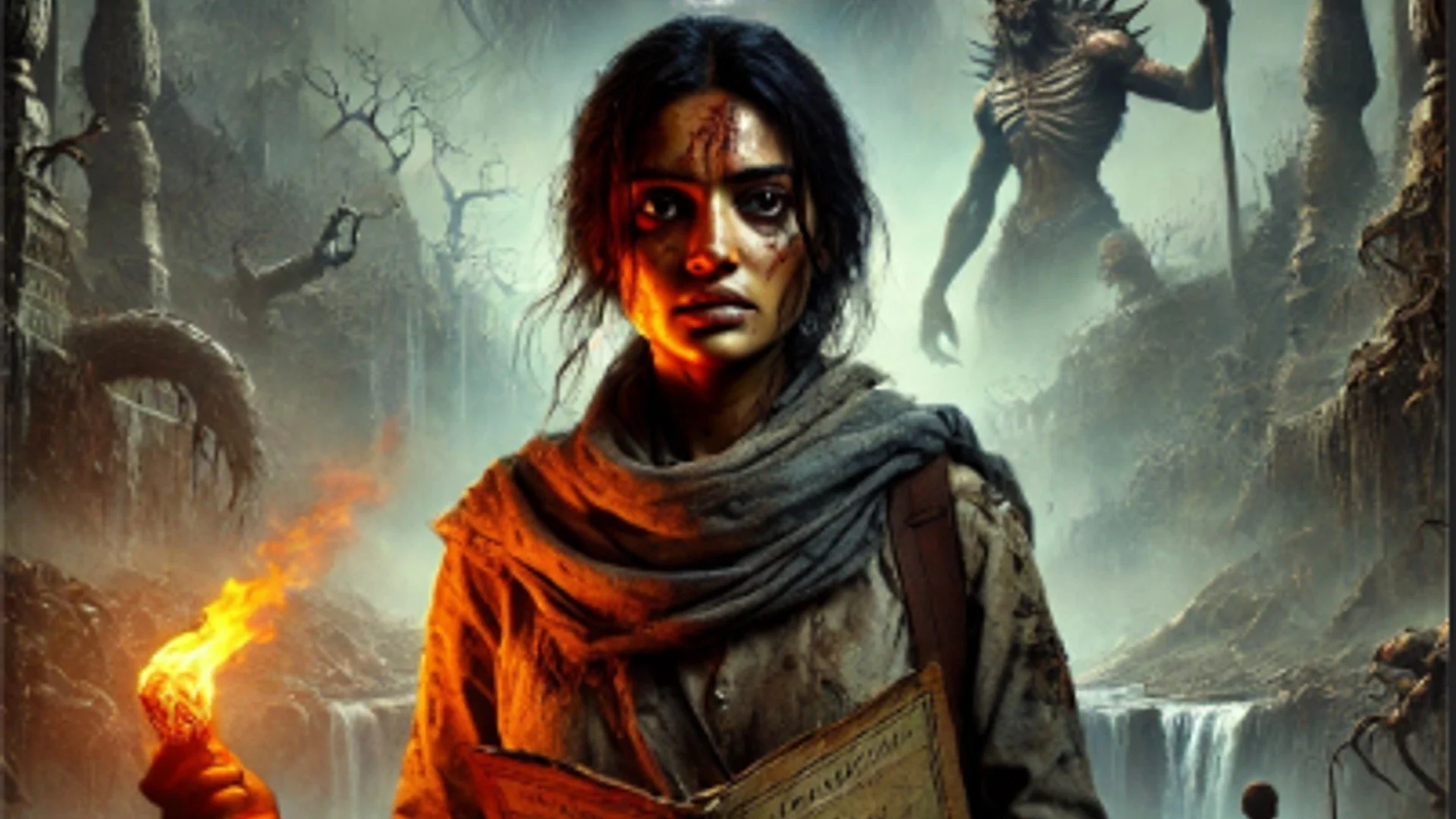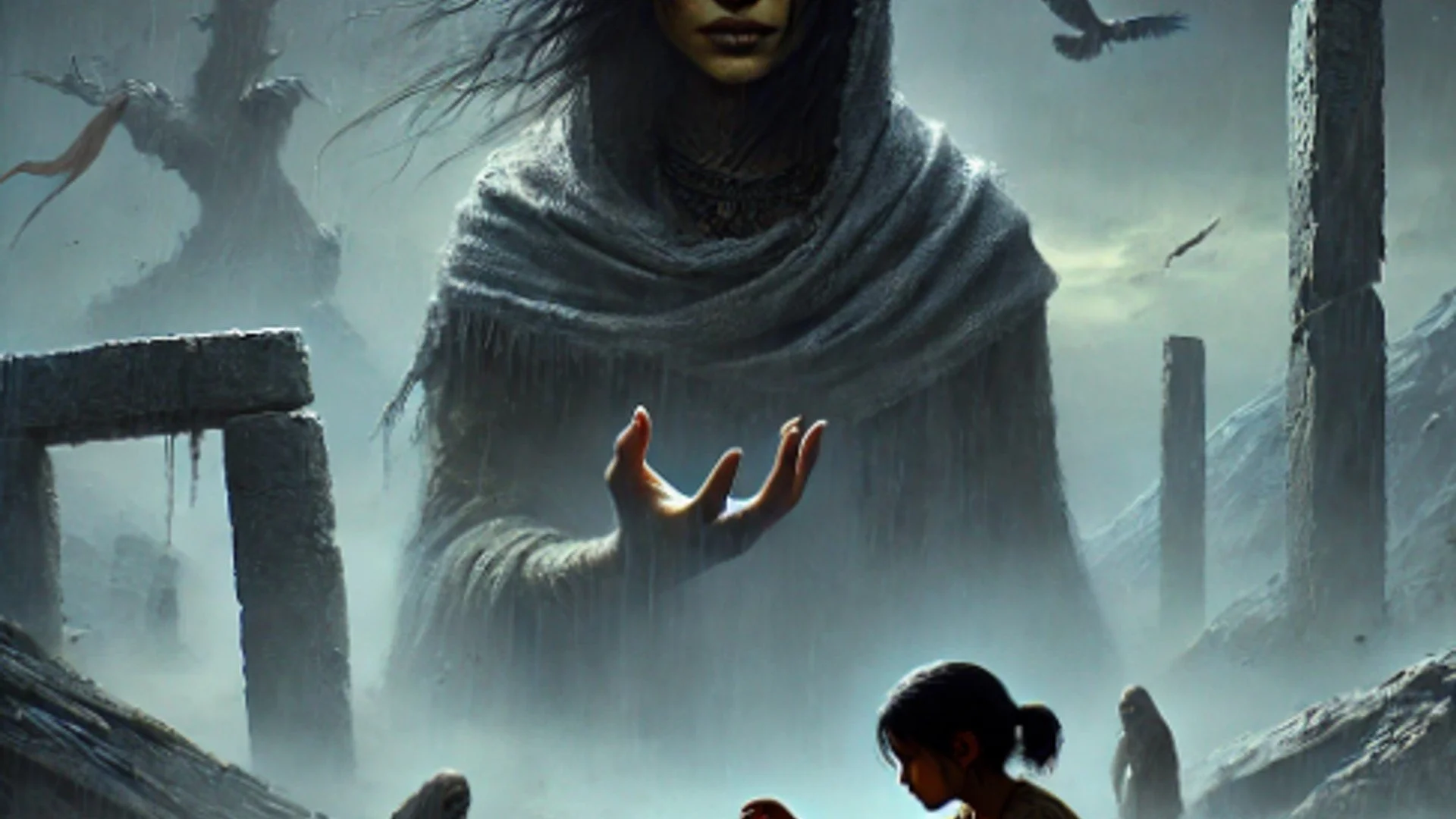Why me?
As a narrative designer and writer with a deep affinity for surreal, emotionally resonant storytelling. I’ve long admired studios like Remedy, Santa Monica Studio, and Ninja Theory’s bold approach to narrative, which consistently push the boundaries of interactive storytelling while grounding them in strong character arcs and thematic cohesion. Taking inspiration from these studios, my recent work, Akhi, was developed during ELEVTR’s Narrative Writing course. The game is both a personal exploration of grief and Hindu myth, combined with a systems-driven narrative experience.

What is Akhi?
Akhi is a third-person action-adventure set in a mythologically infused world shaped by trauma and memory. The game follows Akhi, a woman cast into a collapsing universe where the emotional weight of her past reshapes reality itself. Through elemental companions, symbolic boss fights, and memory-based exploration, Akhi invites players into a metaphysical journey driven by interactive storytelling and character-led progression.
What this project showcases:
Structured screenplay writing, with cinematics built using Final Draft and game-aware scene composition.
In-game dialogue and collectibles, written with pacing and emotional tone in mind, while serving VO and gameplay flow.
Environmental storytelling, with memory echoes, companion quests, and symbolic world design.
Narrative systems integration, including emotional choice loops, puzzle-driven storytelling, and dynamic companion mechanics.
Lore building within constraints, using real-world mythos (Hindu cosmology) as a foundation for a new, culturally rich IP.
Cross-departmental empathy, with gameplay-matching writing that considers level design, pacing, mood, and VO delivery.
Process
As the sole writer and narrative designer on Akhi, I developed all character arcs, quest design, dialogue, lore entries, and cinematic scripting from scratch. Under the tutelage and guidance of my course mentors, I structured my workflow to mirror in-studio practices:
Previsualization: Each mission and narrative beat began with a macro flow chart integrating gameplay systems, player emotion arcs, and narrative structure.
VO-ready dialogue was written with pacing, emotion, and delivery rhythm in mind. Dialogue trees were designed to be emotionally responsive rather than functionally divergent — creating tone shifts instead of binary outcomes.
Narrative implementation logic (e.g., companion absorption, memory fragments, truth illusions) was designed in tandem with symbolic boss fights and elemental mechanics to reflect character growth in moment-to-moment play.
Lore entries and environmental puzzles were designed to reinforce theme and world cohesion for layered storytelling.
I also referenced player psychology, grief models, and emotional pacing frameworks to inform each stage of progression — ensuring the story was not only resonant but mechanically supported.
What makes me a creative fit
I believe I’m a strong fit for any narrative team because I approach writing with a systems mind, a collaborative spirit, and a genuinely deep reverence for the weird. My work on Akhi shows my ability to blend emotionally complex characters with layered worldbuilding and gameplay-aware narrative. I thrive in spaces where story, design, and emotion intersect, where genre is fluid, the fourth wall is optional, and no mechanic exists without meaning. I love the notion that games can be literary, experimental, and unforgettable. That’s the kind of world I’d love to be part of.


